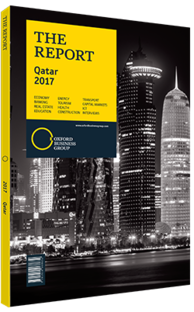Wadih AbouNasr, Country Senior Partner, PwC Qatar: Interview

Interview: Wadih AbouNasr
Where do you see the most potential for the government to develop new revenue streams?
WADIH ABOUNASR: When tasked with counteracting the slump in hydrocarbons prices, the government floated the potential introduction of value-added tax (VAT) and excise tax as initial moves to diversify revenue streams. However, it is evident that other measures will also be needed to truly diversify Qatar’s revenues, since the IMF estimates that revenues from the introduction of VAT will represent roughly 1% of total GDP.
Qatar will eventually introduce a new public-private partnership law, which should both encourage private investments in main areas of the economy and allow the government to share in the success of large infrastructure projects without the initial cash outlay. Recently, the Ministry of Economy and Commerce has renewed efforts to encourage investors to be involved in increasing self-sustainability in a number of target sectors. This will help the entire value chain, leading to new employment opportunities, additional investments and more taxes being collected. As a natural outcome, the broadening of corporate income tax to include nationally owned investments will likely assist in improving government revenue streams as well. However, it is important that this is coupled with a decrease in subsidies and controlled spending.
What impacts are the introduction of VAT and other indirect taxes likely to have?
ABOUNASR: Any consumer tax will impact the consumer price index and place inflationary pressure on prices. As such, impact will depend on the elasticity of demand for the various categories of consumer goods and services. That impact will be mitigated by the relatively low rate of VAT, which stands at 5% – low enough to limit any inflationary pressure – as well as by the number of exclusions being proposed.
The introduction of excise tax aims to curb consumption of certain goods – those which are known to have negative health effects – by raising their cost. It is hoped that this will create savings in the state’s health care bill, though such an outcome is usually difficult to measure and may take a long time to materialise. The effects of VAT, meanwhile, are likely to be minimal overall, as basic food items and other necessities are usually not taxable, with health care and education exempted in most cases as well.
That said, consumers will naturally note a certain increase in prices, and it is well established that after the initial introduction of such taxes, consumers often decrease their purchases or defer them.
The same is also true for businesses. The introduction of VAT is likely to affect businesses in the short to medium term, namely from the perspective of cash flows, and in the potential impact on margins in some sectors, such as the banking industry, health care and compliance costs.
However, that impact can be minimal if – and only if – the implementation system in place is well designed, neutral and made easy to comply with.
How can authorities ensure that the new indirect taxes are not viewed as regressive?
ABOUNASR: The introduction of any measure by a government entity must be supported by clear and effective communication. It is highly recommended that the government organises ways to raise awareness of the new taxes among the population. This could be done through the Chamber of Commerce, universities, incubation centres and other educational channels, seminars and workshops.
A clear and comprehensive communications campaign about the benefits of the tax should also be rolled out, as it is important for the government to demonstrate why the tax is being brought in, and for what purpose the funds are being levied. It is beneficial to demonstrate to the public the utility of such taxes and what programmes they will be used to fund.
You have reached the limit of premium articles you can view for free.
Choose from the options below to purchase print or digital editions of our Reports. You can also purchase a website subscription giving you unlimited access to all of our Reports online for 12 months.
If you have already purchased this Report or have a website subscription, please login to continue.

